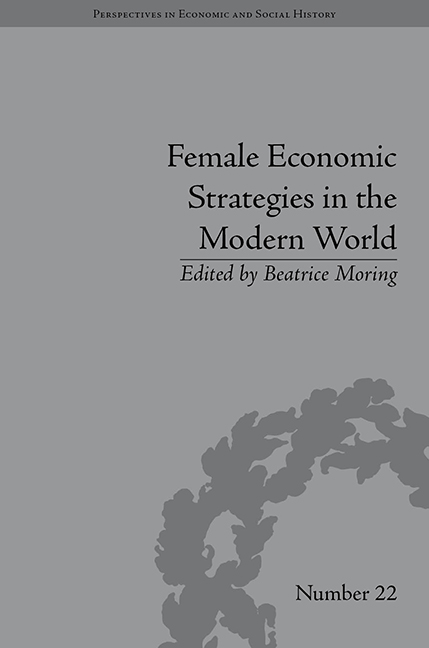Refine search
Actions for selected content:
26946 results in Economic history
Works Cited
-
- Book:
- Federal Banking in Brazil
- Published by:
- Pickering & Chatto
- Published online:
- 05 December 2014, pp 205-218
-
- Chapter
- Export citation
1 - We Are for Gambling: The Pre-Casino Years and Casino Legalization
-
- Book:
- Gambling on the American Dream
- Published by:
- Pickering & Chatto
- Published online:
- 05 December 2014, pp 11-32
-
- Chapter
- Export citation

Female Economic Strategies in the Modern World
-
- Published by:
- Pickering & Chatto
- Published online:
- 05 December 2014
-
- Book
- Export citation
Acknowledgements
-
- Book:
- Federal Banking in Brazil
- Published by:
- Pickering & Chatto
- Published online:
- 05 December 2014, pp ix-x
-
- Chapter
- Export citation
Frontmatter
-
- Book:
- Energy, Trade and Finance in Asia
- Published by:
- Pickering & Chatto
- Published online:
- 05 December 2014, pp i-vi
-
- Chapter
- Export citation
Index
-
- Book:
- The Development of International Insurance
- Published by:
- Pickering & Chatto
- Published online:
- 05 December 2014, pp 247-261
-
- Chapter
- Export citation
2 - The Industrial Background
-
- Book:
- Multinationals, Subsidiaries and National Business Systems
- Published by:
- Pickering & Chatto
- Published online:
- 05 December 2014, pp 11-18
-
- Chapter
- Export citation
4 - William Fellner and the Intersection of Macro and Microeconomics
-
- Book:
- Reforming the World Monetary System
- Published by:
- Pickering & Chatto
- Published online:
- 05 December 2014, pp 51-62
-
- Chapter
- Export citation
4 - Falconbridge, the Kristiansand Plant and the Norwegian Business System, 1929–39
-
- Book:
- Multinationals, Subsidiaries and National Business Systems
- Published by:
- Pickering & Chatto
- Published online:
- 05 December 2014, pp 31-48
-
- Chapter
- Export citation
Introduction
-
- Book:
- Mining and the State in Brazilian Development
- Published by:
- Pickering & Chatto
- Published online:
- 05 December 2014, pp 1-8
-
- Chapter
- Export citation
3 - The Rise and Fall of the Kristiansand Nickel Company, 1910–24
-
- Book:
- Multinationals, Subsidiaries and National Business Systems
- Published by:
- Pickering & Chatto
- Published online:
- 05 December 2014, pp 19-30
-
- Chapter
- Export citation
3 - Migration to a Regional Textile Centre, 1760–1800
-
- Book:
- Migrants and Urban Change
- Published by:
- Pickering & Chatto
- Published online:
- 05 December 2014, pp 69-100
-
- Chapter
- Export citation
5 - Policyholders in the Early Business of Japanese Life Assurance: A Demand-Side Study
- from Part II - Life, Health and Social Insurance
-
-
- Book:
- The Development of International Insurance
- Published by:
- Pickering & Chatto
- Published online:
- 05 December 2014, pp 103-116
-
- Chapter
- Export citation
Notes
-
- Book:
- Entrepreneurial Families
- Published by:
- Pickering & Chatto
- Published online:
- 05 December 2014, pp 141-176
-
- Chapter
- Export citation
Acknowledgements
-
- Book:
- Virginia and the Panic of 1819
- Published by:
- Pickering & Chatto
- Published online:
- 05 December 2014, pp vii-viii
-
- Chapter
- Export citation
5 - Emerging Economies: Asia and the Gulf
-
- Book:
- Energy, Trade and Finance in Asia
- Published by:
- Pickering & Chatto
- Published online:
- 05 December 2014, pp 79-104
-
- Chapter
- Export citation
3 - Women, Work and Survival Strategies in Urban Northern Europe before the First World War
-
-
- Book:
- Female Economic Strategies in the Modern World
- Published by:
- Pickering & Chatto
- Published online:
- 05 December 2014, pp 45-72
-
- Chapter
- Export citation
Preface
-
- Book:
- Energy, Trade and Finance in Asia
- Published by:
- Pickering & Chatto
- Published online:
- 05 December 2014, pp xi-xvi
-
- Chapter
- Export citation
Bibliography
-
- Book:
- Gambling on the American Dream
- Published by:
- Pickering & Chatto
- Published online:
- 05 December 2014, pp 283-308
-
- Chapter
- Export citation
List of Figures and Tables
-
- Book:
- Mining and the State in Brazilian Development
- Published by:
- Pickering & Chatto
- Published online:
- 05 December 2014, pp xiii-xvi
-
- Chapter
- Export citation
